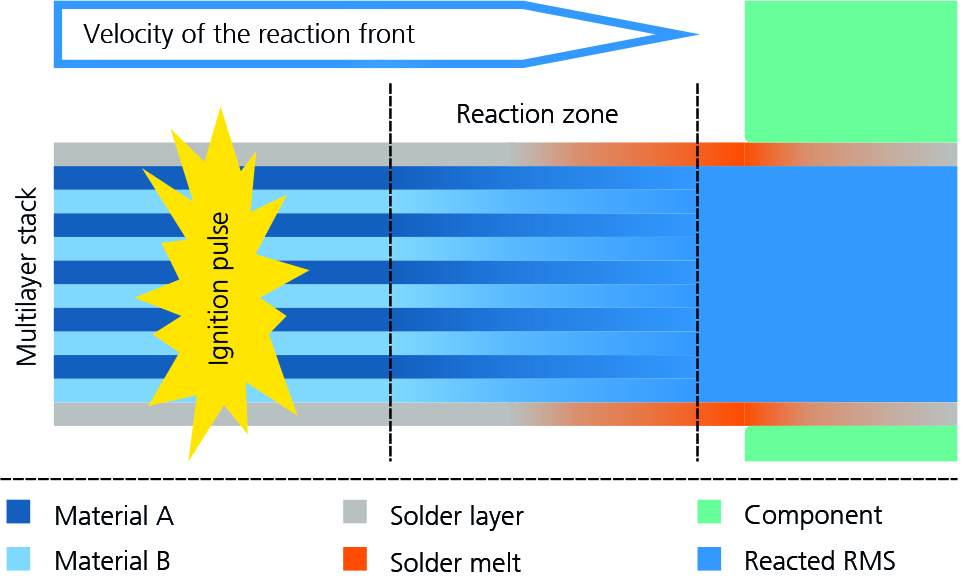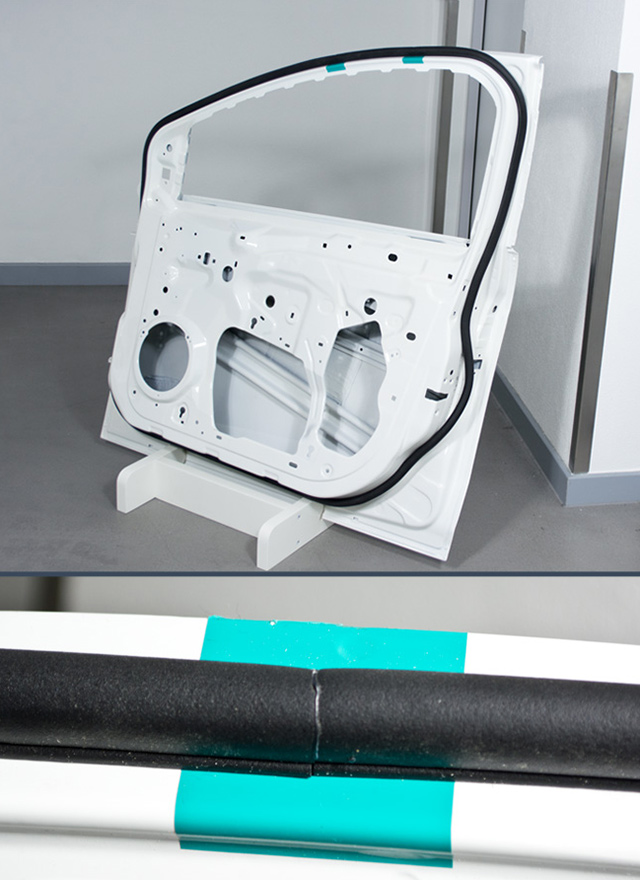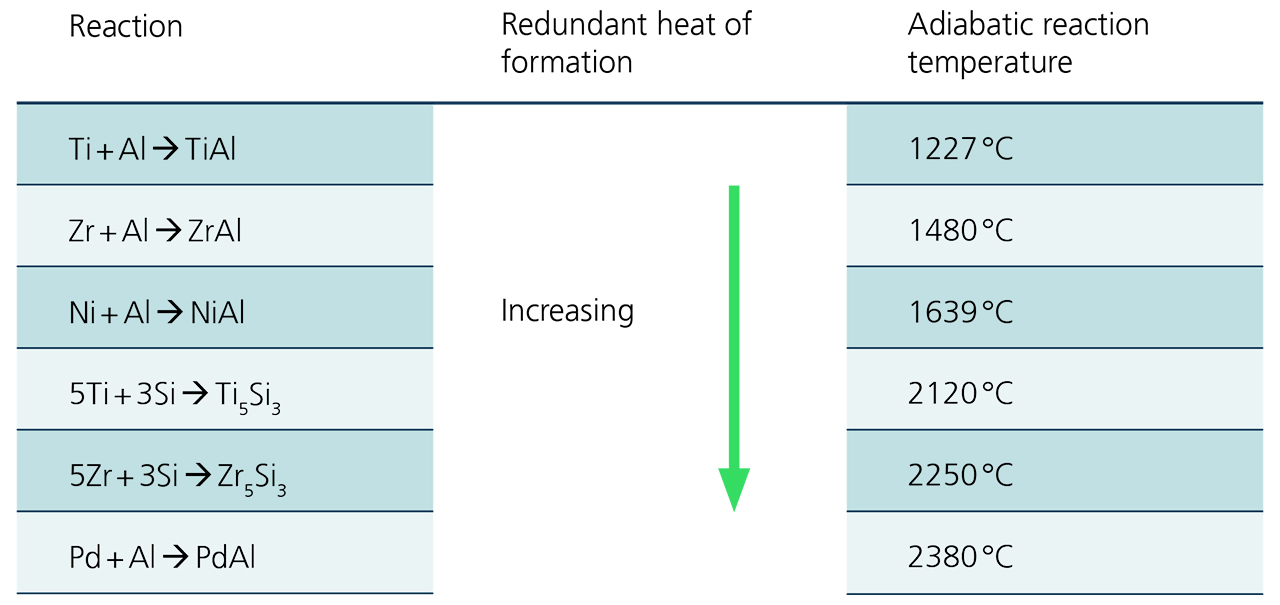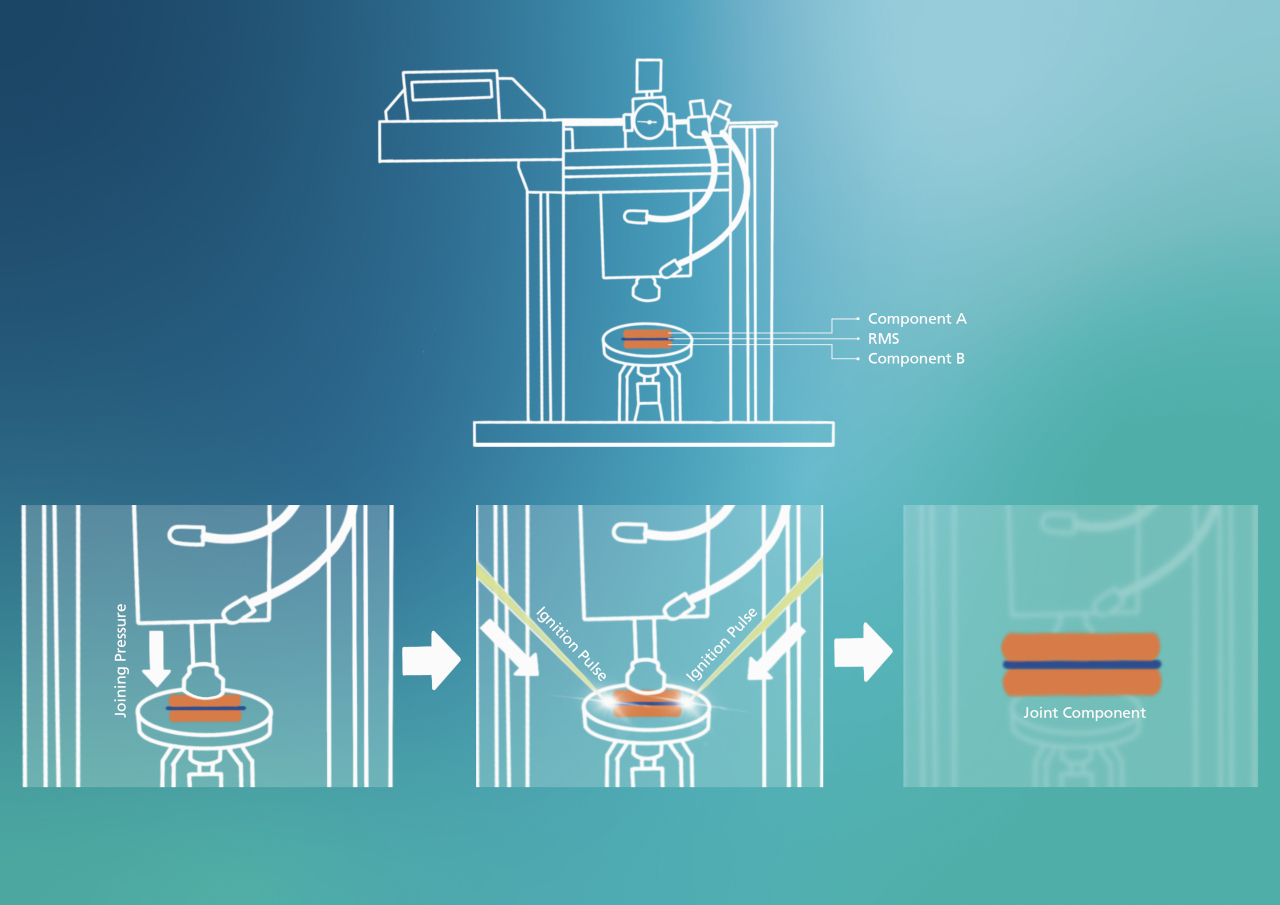Method and principle
With so-called reactive multilayer systems (RMS), Fraunhofer IWS has developed heat sources whose composition can be tailored to their application purpose. RMS consist of at least two materials, which are stacked in several hundred individual layers and react in a self-propagating exothermic manner after exposure to an activation energy, for example a short-term temperature increase. The heat of reaction can be used to melt the base material or a solder to produce a joint. RMS can be deposited directly on components or produced as a standardized, free-standing film. They achieve overall thicknesses ranging from a few micrometers to over 100 μm.
The deposition of the individual layers for the production of RMS is carried out by magnetron sputter deposition (MSD). Via a rotation of the substrate carrier in front of the coating sources, the individual layers can be deposited in the range of a few nanometers and over a hundred nanometers, thus building up the RMS as a whole.
RMS offer the potential for joining to precisely adjust the amount of heat required. Thus, low, medium and high energy RMS material combinations have been developed at Fraunhofer IWS, which allow to melt plastics up to brazing alloys with melting temperatures of more than 700 °C.
 Fraunhofer Institute for Material and Beam Technology IWS
Fraunhofer Institute for Material and Beam Technology IWS


